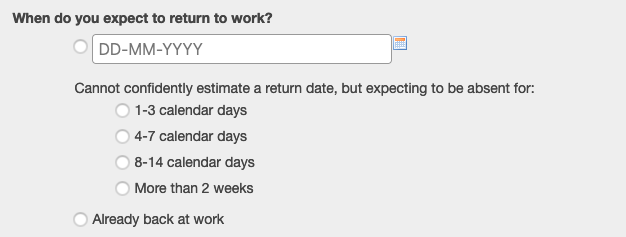When do you expect to return to work?
Expected Return Date brackets on Engage

- Estimated return date provided by employee
- 1-3 calendar days
- 4-7 calendar days
- 8-14 calendar days
- More than 2 weeks
- Already back at work
New estimates are counted from today’s date
The new options will convert to a date entry on the absence record and absence notifications. The system estimates a return date 3, 7 or 14 days from the date that the update was made. To demonstrate to the manager that this date was system-generated, it will be accompanied with a note “employee could not confidently estimate a return date”. This note is visible on email absence alerts and in the web portal, but not in SMS alerts. If in doubt, check the full absence details in Engage online.

In the above screenshot, you can see an absence alert showing this type of update. As you can see, the absence started in February 2021. This update was logged on 8th March 2021 and the employee has said they expect to be absent for 1-3 days. This means that they will probably be off another 1-3 days from today and that is why the new expected return date is recorded as 11th March.
